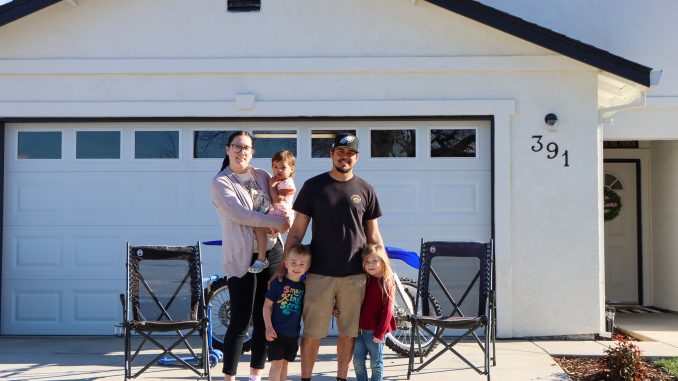
Running on the belief in the economic and social benefits of homeownership, the Community Housing Improvement Program helps North Valley residents become new homeowners.
To create these opportunities, CHIP’s Self-Help Housing Program partners with USDA Rural Development to develop land or buy finished lots to build subdivisions of about 10 to 50 houses for families whose income is at or below 80% of the area’s median income.
“We believe in extending home ownership opportunities to families with limited resources,” says Jill Quezada, CHIP’s Director of Homeownership.“We believe that all families should have the opportunity to benefit from wealth building, the possibility to grow equity to assure a more secure retirement, and the opportunity to pass on assets to future generations.”
Since 1981, the Self-Help Housing Program has helped build about 2,000 new, single-family homes, in mostly rural communities across Butte, Colusa, Glenn, Tehama, Shasta, Sutter, and Yuba counties.
In recent years, Quezada says, the program builds about 30 to 40 new, aesthetically-pleasing, energy efficient homes per year that remain affordable through “sweat equity”—the time and energy families invest in the construction of their home.
“Families are required to contribute 65% of the labor of building the home,” says Quezada. “On practical terms, it’s about 30 hours per week, per household until the construction is complete.”
New homeowners work on their home but also other families’ homes in their construction group so, from the start, the neighborhood is building itself up.
Construction can last for many months, with a Construction Supervisor training families and ensuring quality and safety standards. In this time, families will work on tasks such as framing, raising walls, installing flooring, and general carpentry such as installing windows, doors, and fences.
While more complicated tasks—such as plumbing and electricity—are left to contractors, these new homeowners are often learning new skills that Quezada says can help them maintain or improve their homes or even find a new career in carpentry or construction.
The hundreds of hours of sweat equity the new homeowners put into building their neighborhood ultimately helps lower their own, no cash-down, fixed-rate mortgage as the contributed labor reduces the cost of building the home but not its appraisal value.
Aside from financial benefits for the homeowner and the community—as new homes bring in jobs and taxes for schools and infrastructure—Quezada says that building new homes in this manner starts the neighborhood off on a good foundation.
“They’re committed to their neighbors from day one, pulling out their hammers and putting up walls,” Quezada says. “It’s the community that’s keeping families in their homes for decades and investing in their neighborhood long after the homes have been built.”
Leo Romero, currently a Construction Foreman in the Self-Help Housing Program, agrees. Romero had been working with CHIP for four years when he built his Glenn County home through the program in 2004.
Spurred by wanting to give his growing family a place of their own, Romero found renting to be wasteful and buying in the area next to impossible outside of the Self-Help Housing Program.
“Paying rent is just throwing your money away,” Romero says. “When you own a house, it’s an investment. You’re putting your money into your own account.”
It’s an investment that paid off for his family and the community he helped build as most of his original neighbors from the program still reside in their homes.
“You create a friendship, a community, “Romero says. “And after you move in, you still help each other out. You can count on someone for when you need help.”
This community-building is evident in Orland, Quezada says, a town of about 8,000 where the program has built close to 500 homes over the years. She’s seen, first-hand, how this influx of safe and affordable housing can transform a neighborhood into a more healthy and vibrant community.
With long-standing impact throughout the area, CHIP’s Self-Help Housing Program proves that with some creativity, pride, and a lot of hard work, anyone can build a home. And a community.
To learn more about CHIP’s programs, visit https://chiphousing.org/

